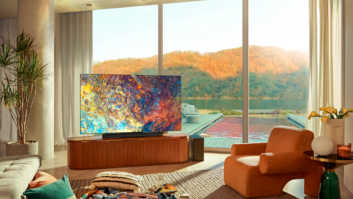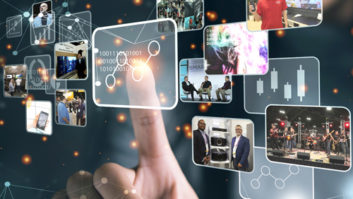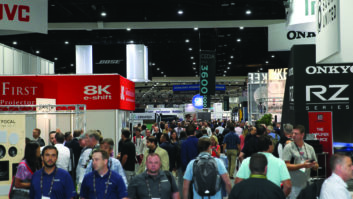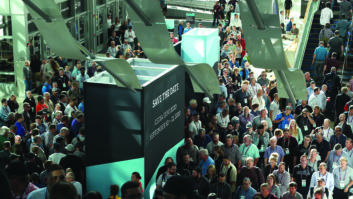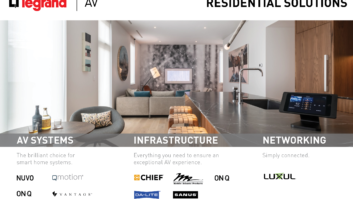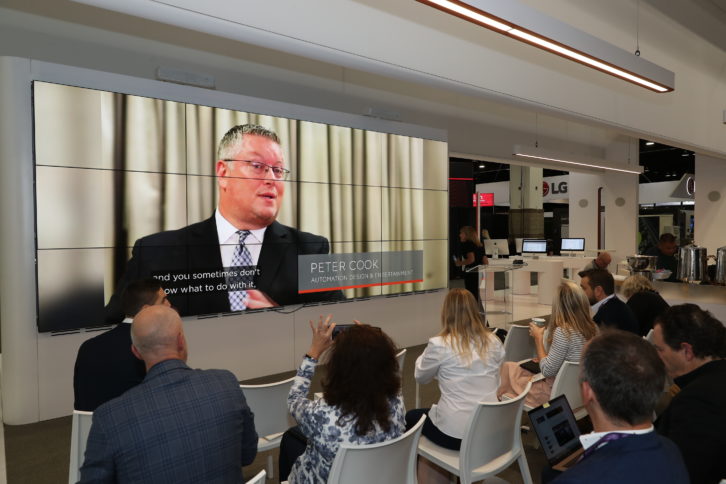
CEDIA’s technical research consultant, David Meyer, has found a bit of a silver lining in the need to present this year’s Expo educational offerings as a “virtual experience.” “We have to truncate and distill everything,” he says. The constraints of online classes don’t allow much room for small talk, which Meyer believes will give him and his fellow instructors an even sharper focus when it comes to preparing the 2020 curriculum.
The Expo Experience, slated for September 15–17, 2020, will feature an educational component just like any other year, and, just like any other year, an All-Access pass will be available. But there’re some unique things happening when it comes to the 2020 “Experience” schedule: For one thing, Meyer won’t be leaving his home in Australia, which means that the back-to-back-to-back courses he’s teaching will happen at unusual hours for CEDIA classes.
Tuesday, September 15 is notable — Meyer will teach classes at 4:00, 6:00, 7:30, and 9:30 PM EDT, all covering various video delivery issues. That run starts with a “Video Transport Deathmatch,” a discussion of the pros and cons of various delivery technologies. “Should I use HDBaseT, fiber, VoIP, what?” says Meyer. “It’s a grownup discussion about virtues, potential downfalls, and so on,” he says (but admittedly in a more civil manner than the name implies). The “Deathmatch” (which was packed to capacity when an earlier version was presented at ISE 2020) is followed by classes on AV-over-IP, HDMI 2.1, and HDR. (If you can’t make a class at the given time, no need to worry — all of this year’s material will live on past the event in an “on-demand” platform.)
The Business of Business
Other instructors taking part in the 50-plus offerings during the Expo Experience include CEDIA staffers Samantha Ventura (vice president of education and training) and Steve Rissi (director of technical training). There’s a number of business classes included, covering everything from client care programs to managing change and becoming a better leader. Rissi is an RMR expert, having run a customer service division for a big commercial firm before his most recent gig at CEDIA. (You can hear a complete rundown of what he’s learned in the CEDIA Podcast on the subject.)
Ventura, for her part, has worked with Rissi to present an update on the panel discussion “Find, Hire, and Keep Your Next Rock Star.” Finding great techs might be easier than usual given the economic downturn (this might be your best chance to recruit in years), but this discussion will help you keep those employees once you’ve gotten them in the door. “Invest in an employee’s professional development. Give them a career path, “says Ventura, “keep them in your fold — turnover is expensive.” The concepts here dovetail into other courses regarding “transformational leadership” and keeping your employees’ trust during times of change — also taught by Ventura.
New Spaces for CEDIA
A few 2020 classes dig into some spaces CEDIA hasn’t really covered before. Longtime CEDIA volunteer Geoff Meads (Presto AV) will be presenting a foundational course on home recording studios. “There’s been a demand for these things as a result of the lockdowns, and not just from pro musicians,” says Meads. “There’s lots of transferable skills from the CEDIA world: networking, acoustics, speakers. But there are big differences — a great home cinema is about re-creating an artist’s intent, this is about creating that work from scratch.”
For his part, Steve Rissi noticed that no less than 95 percent of CEDIA integrators are doing some light commercial work, and that a big focus has been videoconference rooms. Echoing Meads’ observations, Rissi notes that there are a lot of integration skills that can be carried into workspaces, but the user experience is very different — in the home, you eventually demo the system to the client and his family, but a commercial interface is used by a broad number of people. “In that case, the interface has to be so universal that it’s literally a one- or two-button operation,” he says.
For more information, visit cediaexpovirtual.com.

